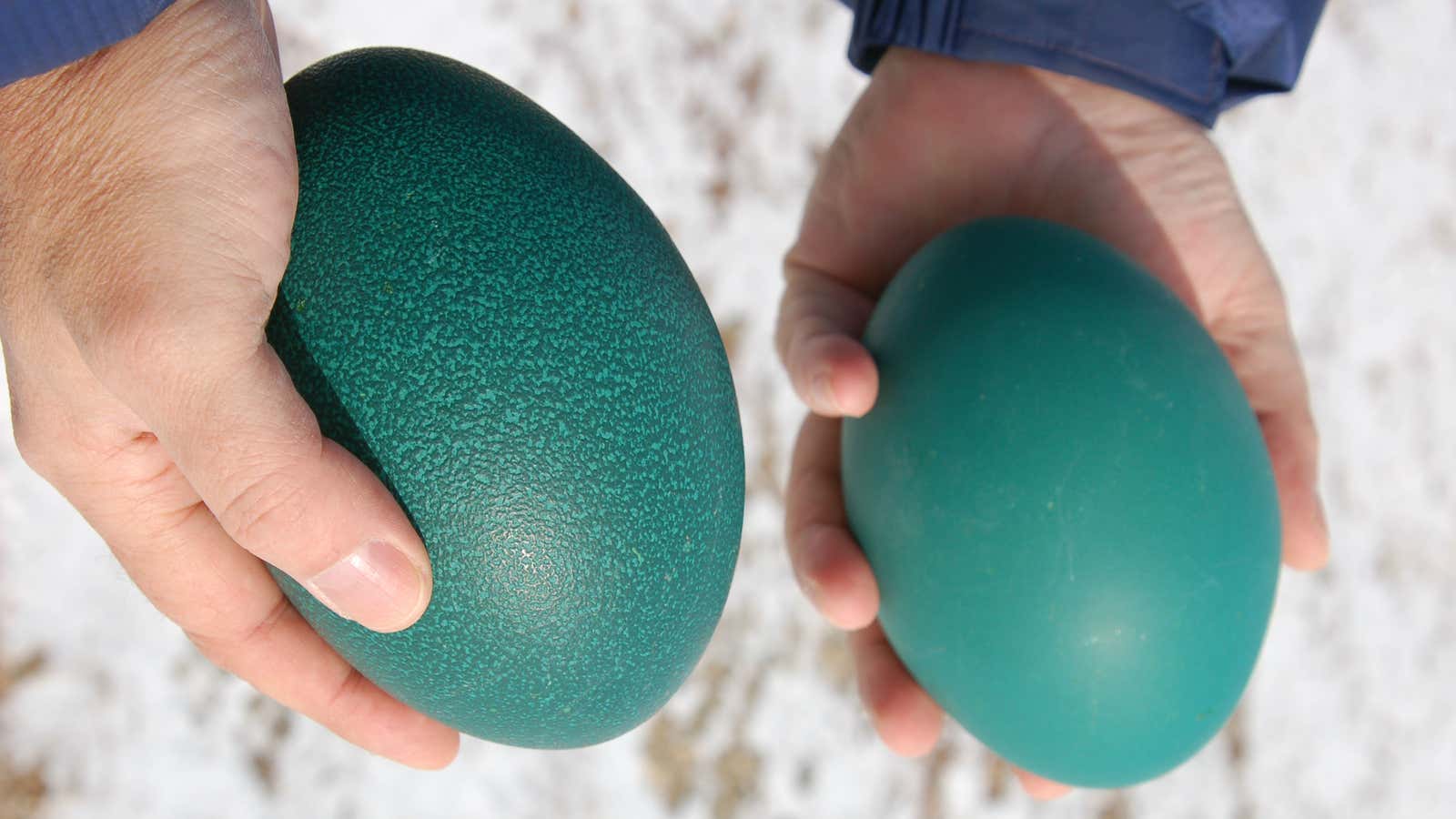Australia is a land of giant animals: spiders with foot-long leg spans, bats with six-feet wingspans, lizards reaching up to 200 pounds. The continent has a fascinating history of terrifyingly huge animals.
You’d think that would scare people off. Not so, research suggests. About 50,000 years ago, Australia was home to a 500-pound bird known as Genyornis newtoni. Research published recently in Nature Communications suggests that humans contributed to the species’ demise by eating their melon-sized eggs.
Cooked to perfection, of course.
Researchers from the University of Colorado, Boulder, collected bits of the extinct bird’s eggshell from almost 2,000 different sites across Australia. At about 200 of these sites, the fragments were charred. With the help of analytical chemistry, scientists found that a breakdown pattern of amino acids in the eggs—the chemicals that make up proteins—suggested that they had been cooked, likely over something like embers.
The scientists argue that these conditions “are consistent with early humans harvesting Genyornis eggs, cooking them over fires, and then randomly discarding the eggshell fragments in and around their cooking fires,” Gifford Miller, a geologist at the University of Colorado, Boulder and lead author of the study, said in a press release. Because of the specific burn pattern left on the eggshells, Miller and his team ruled out wildfires or other natural causes as the source of the charring.
Dating techniques aged the eggshells at about 47,000 years old; Genyornis newtoni became extinct (pdf) around the same time. Though the exact period of human’s arrival to the continent is unknown, Miller says that there is “reliable evidence they were widely dispersed across the continent” at the same time.
However, early human cuisine wasn’t the only factor that may have been working against these giant birds. Between 60,000 and 40,000 years ago, the continent was undergoing a severe dry spell (paywall), which killed off many of the massive animals that roamed the landscape at that time. “Predation, combined with widespread changes in ecosystem composition throughout its range, very likely caused Genyornis’ extinction,” the authors wrote.
This bird’s extinction is one of many linked to human activity. In fact, scientists worry that we’re about to experience a sixth mass extinction due to our behavior. Over the last 100 years, the extinction rate has been up to 100 times (paywall) higher than it has been in the past, likely a result of the way we’ve been clearing out animal habitats for our own use, contributing to changing climate through greenhouse gas emissions, and polluting waterways with chemicals and other toxins.
